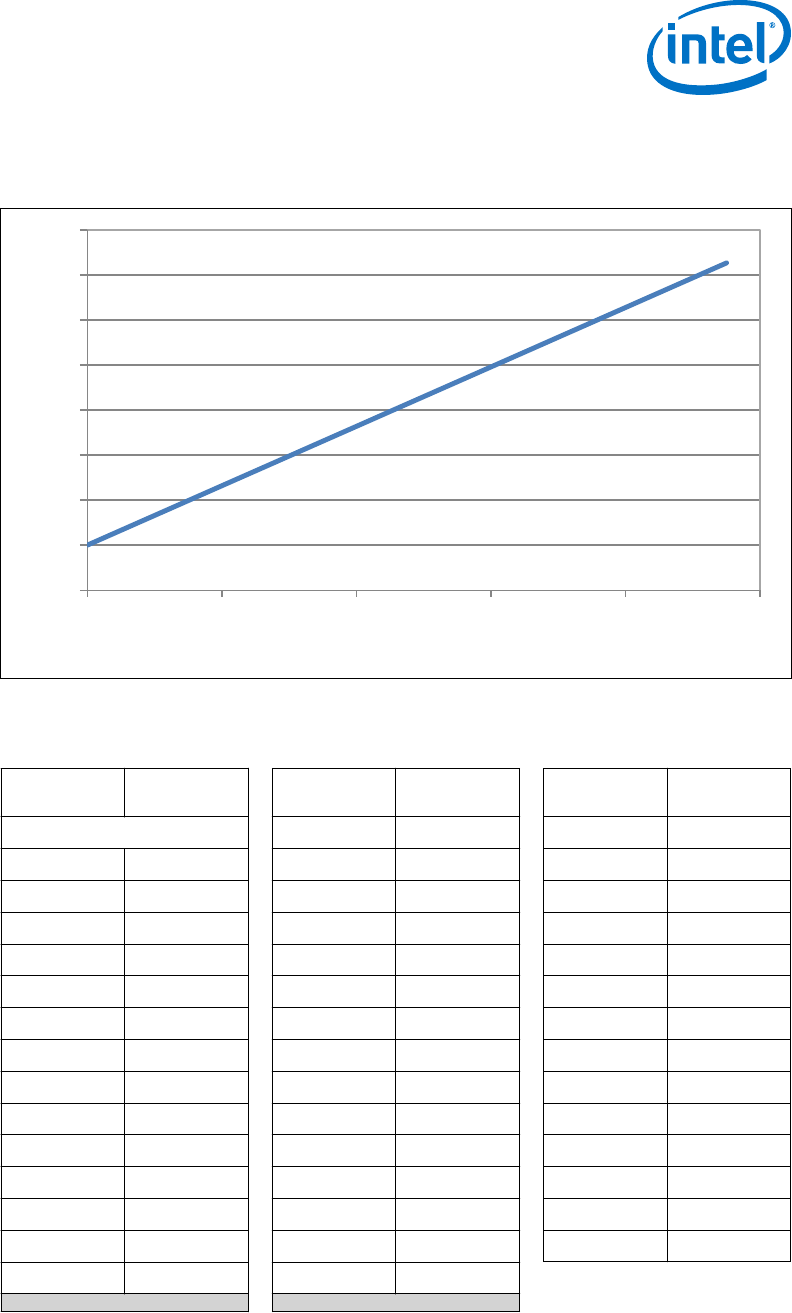Desktop 4th Generation Specification Sheet
Table Of Contents
- Contents
- Revision History
- 1.0 Introduction
- 2.0 Interfaces
- 3.0 Technologies
- 3.1 Intel® Virtualization Technology (Intel® VT)
- 3.2 Intel® Trusted Execution Technology (Intel® TXT)
- 3.3 Intel® Hyper-Threading Technology (Intel® HT Technology)
- 3.4 Intel® Turbo Boost Technology 2.0
- 3.5 Intel® Advanced Vector Extensions 2.0 (Intel® AVX2)
- 3.6 Intel® Advanced Encryption Standard New Instructions (Intel® AES-NI)
- 3.7 Intel® Transactional Synchronization Extensions - New Instructions (Intel® TSX-NI)
- 3.8 Intel® 64 Architecture x2APIC
- 3.9 Power Aware Interrupt Routing (PAIR)
- 3.10 Execute Disable Bit
- 3.11 Supervisor Mode Execution Protection (SMEP)
- 4.0 Power Management
- 4.1 Advanced Configuration and Power Interface (ACPI) States Supported
- 4.2 Processor Core Power Management
- 4.3 Integrated Memory Controller (IMC) Power Management
- 4.4 PCI Express* Power Management
- 4.5 Direct Media Interface (DMI) Power Management
- 4.6 Graphics Power Management
- 5.0 Thermal Management
- 5.1 Desktop Processor Thermal Profiles
- 5.2 Thermal Metrology
- 5.3 Fan Speed Control Scheme with Digital Thermal Sensor (DTS) 1.1
- 5.4 Fan Speed Control Scheme with Digital Thermal Sensor (DTS) 2.0
- 5.5 Processor Temperature
- 5.6 Adaptive Thermal Monitor
- 5.7 THERMTRIP# Signal
- 5.8 Digital Thermal Sensor
- 5.9 Intel® Turbo Boost Technology Thermal Considerations
- 6.0 Signal Description
- 6.1 System Memory Interface Signals
- 6.2 Memory Reference and Compensation Signals
- 6.3 Reset and Miscellaneous Signals
- 6.4 PCI Express*-Based Interface Signals
- 6.5 Display Interface Signals
- 6.6 Direct Media Interface (DMI)
- 6.7 Phase Locked Loop (PLL) Signals
- 6.8 Testability Signals
- 6.9 Error and Thermal Protection Signals
- 6.10 Power Sequencing Signals
- 6.11 Processor Power Signals
- 6.12 Sense Signals
- 6.13 Ground and Non-Critical to Function (NCTF) Signals
- 6.14 Processor Internal Pull-Up / Pull-Down Terminations
- 7.0 Electrical Specifications
- 8.0 Package Mechanical Specifications
- 9.0 Processor Ball and Signal Information

Processor (PCG 2013D) Thermal Profile
Figure 15. Thermal Test Vehicle Thermal Profile for Processor (PCG 2013D)
40
45
50
55
60
65
70
75
80
0 20 40 60 80 100
TTV Case Temperature (°C)
TTV Power (W)
T
CASE
= 0.33 * Power + 45.0
See the following table for discrete points that constitute the thermal profile.
Table 22. Thermal Test Vehicle Thermal Profile for Processor (PCG 2013D)
Power (W) T
CASE_MAX
(°C)
Y = 0.33 * Power + 45
0 45.00
2 45.66
4 46.32
6 46.98
8 47.64
10 48.30
12 48.96
14 49.62
16 50.28
18 50.94
20 51.60
22 52.26
24 52.92
26 53.58
continued...
Power (W) T
CASE_MAX
(°C)
28 54.24
30 54.90
32 55.56
34 56.22
36 56.88
38 57.54
40 58.20
42 58.86
44 59.52
46 60.18
48 60.84
50 61.50
52 62.16
54 62.82
56 63.48
continued...
Power (W) T
CASE_MAX
(°C)
58 64.14
60 64.80
62 65.46
64 66.12
66 66.78
68 67.44
70 68.10
72 68.76
74 69.42
76 70.08
78 70.74
80 71.40
82 72.06
84 72.72
5.1.1
Thermal Management—Processor
Desktop 4th Generation Intel
®
Core
™
Processor Family, Desktop Intel
®
Pentium
®
Processor Family, and Desktop Intel
®
Celeron
®
Processor Family
December 2013 Datasheet – Volume 1 of 2
Order No.: 328897-004 67










